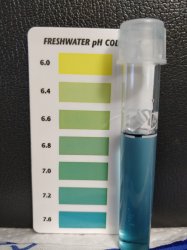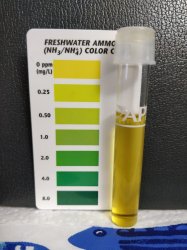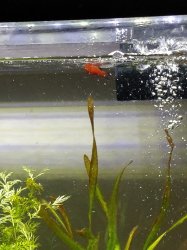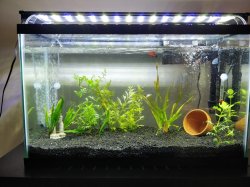If you get a glass of water and add some fish food. Wait an hour and then test that water for ammonia. There should be an ammonia reading caused by the fish food breaking down in the glass of water.
----------------------
Your original post would suggest a water quality issue (ammonia, nitrite, nitrate, pH or low GH) or a chemical poisoning the fish.
Do you use a bucket specifically for the fish tank or do you use any bucket in the house?
Make sure you don't have any creams, grease, oil, perfume, or any chemicals on your hands when working on the fish. Use a perfume free soap to wash up. If you use anti-bacterial soap, wash your hands with water only before working in the tank because they can leave a residue behind that poisons fish.
If you can post some pictures of the sick or dead fish it helps us identify the problem.
Hi Colin,
Sure will try out the fish food in a glass of water,but is 1 hour enough or should i rest it overnight, and check my ammonia test kit solution.
Again today i did a water test here are latest readings..
Ammonia - 0 to 0.25
Nitrite - 0
Nitrate - 0 to 10 ppm (hard to match from 5 in1 strip, but it was pale white with a very light tinge of rose)
Ph - 7 from strip, 7.2 to 7.4 from solution(may look darker in pic)
Gh - 40 to 50 ppm
Kh - 40 ppm
My first dose of seachem equlibrium did not raise the gh or kh or if it did was absorbed by plants, will add a dosage today with my water change..
sorry i did not take a photo of my died fish, but i do have a photo when it was alive 2 days before it left me.i have attached it not sure if that would help. It was hovering on the surface for few days just as other platies did befire they died..
I have also attached the test results from my recent test..
In general i get a very soft water, so to maintain balance and to increase hardness in water is equilibrium best or should i consider alkaline buffer, also can i use baking soda/baking powder to increase carbanote hardness?..
One confusion i have is whether my tank is still cycling so as a result do i keep losing one fish per week or is there some parasite like gill flukes or something which affects them. I tend to think the latter because if it was ammonia poisoning many fishes should have shown poisoning symptoms simultaneously, not sure if it may show symptoms one by one after one fish dies, other fish starts with same symptoms.. hopefully tank gets established over time soon..






